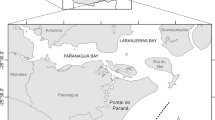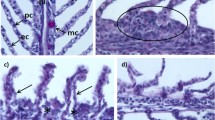Abstract
Several studies have considered the direct and indirect effects of demersal trawling on discarded species in terms of sublethal damages, survival, and stress due to the fishing processes. Nevertheless the effects of air temperature on the physiological stress and the survival of species during sorting operations were only marginally explored. This factor could be particularly important in the context of sustainable fisheries at temperate latitudes where the seasonal variation of air temperature can be particularly pronounced. In this study the seasonal effects of rapido trawling on the non-target species Liocarcinus depurator (Portunidae) in the Northern Adriatic Sea (Mediterranean Sea) have been compared by applying survival tests and considering the unbalance in metabolites’ concentration as indicators of physiological stress. Results showed consistently higher mortalities during exposure to air in summer (temperature: 28°C), which reached about 96% in 20 min, compared to winter (temperature: 9°C) when only 2% of individuals died. Furthermore trawled and emersed crabs showed significant increase of hemolymph ammonia, lactate, and glucose concentrations as effects of extreme exercise and suffocation, which was more prominent during summer, suggesting that air temperature can play an important role in determining non-target species survival.


Similar content being viewed by others
References
Bergmann, M. & P. G. Moore, 2001. Survival of decapod crustaceans discarded in the Nephrops fishery of the Clyde Sea area, Scotland. ICES Journal of Marine Science 58: 163–171.
Bergmann, M., D. J. Beare & P. G. Moore, 2001a. Damage sustained by epibenthic invertebrates discarded in the Nephrops fishery of the Clyde Sea, Scotland. Journal of Sea Research 45: 105–118.
Bergmann, M., A. C. Taylor & P. G. Moore, 2001b. Physiological stress in decapod crustaceans (Munida rugosa and Liocarcinus depurator) discarded in the Clyde Nephrops fishery. Journal of Experimental Marine Biology and Ecology 259: 215–229.
Bergmann, M., S. K. Wieczorek, P. G. Moore & R. J. A. Atkinson, 2002. Utilisation of invertebrates discarded from the Nephrops fishery by variously selective benthic scavengers in the west of Scotland. Marine Ecology Progress Series 233: 185–198.
Bridges, C. R. & A. R. Brand, 1981. The effect of hypoxia on haemolymph oxygen consumption and haemolymph lactate levels of some marine Crustacea. Comparative Biochemistry and Physiology A 65: 157–168.
Briffa, M. & R. W. Elwood, 2001. Decision rules, energy metabolism and vigor of hermit crab fights. Proceedings of the Royal Society of London, Series B 268: 1841–1848.
Briffa, M. & R. W. Elwood, 2002. Power of shell-rapping signals influences physiological costs and subsequent decisions during hermit crab fights. Proceedings of the Royal Society of London, Series B 269: 2331–2336.
Burnett, L. E., 1988. Physiological responses to air exposure: acid–base status and the role of branchial water stores. American Zoologist 28: 125–135.
Cabral, H. N., C. M. Teixeria, R. Gamito & M. J. Costa, 2002. Importance of discards of a beam trawl fishery of organic matter into nursery areas within the Tagus estuary. Hydrobiologia 475/476: 449–455.
Chang, E. S., 1995. Physiological and biochemical changes during the molt cycle in decapod crustaceans: an overview. Journal of Experimental Marine Biology and Ecology 193: 1–14.
Danford, A. R., L. Hagerman & R. F. Uglow, 2002. Effects of emersion and elevated haemolymph ammonia on haemocyanin–oxygen affinity of Cancer pagurus. Marine Biology 141: 1019–1027.
DeFur, P. L., 1988. Systemic respiratory adaptations to air exposure in intertidal decapod crustaceans. American Zoologist 28: 115–124.
Durand, F. & M. Regnault, 1998. Nitrogen metabolism of two portunid crabs, Carcinus maenas and Necora puber, during prolonged air exposure and subsequent recovery: a comparative study. Journal of Experimental Biology 201: 2515–2528.
Engel, P. C. & J. B. Jones, 1978. Causes and elimination of erratic blanks in enzymatic metabolite assays involving the use of NAD+ in alkaline hydrazine buffers: improved conditions for the assay of l-glutamate, l-lactate and other metabolites. Analytical Biochemistry 88: 475–484.
Gamito, R. & H. Cabral, 2003. Mortality of brown-shrimp discards from the beam trawl fishery in the Tagus estuary, Portugal. Fisheries Research 63: 423–427.
Gutmann, I. & A. W. Wahlefeld, 1974. l-(+)-lactate: determination with lactate dehydrogenase and NAD+. In Bergmeier, H. U. (ed.), Methods of Enzymatic Analysis. Academic Press, New York: 1464–1468.
Hagerman, L., T. Søndergaard., K. Weile, D. Hosie & R. F. Uglow, 1990. Aspects of blood physiology and ammonia excretion in Nephrops norvegicus under hypoxia. Comparative Biochemistry and Physiology 97: 51–55.
Hall-Spencer, J. M., C. Froglia, R. J. A. Atkinson & P. G. Moore, 1999. The impact of Rapido trawling for scallops, Pecten jacobaeus (L.), on the benthos of the Gulf of Venice. ICES Journal of Marine Science 56: 111–124.
Kaiser, M. J. & B. E. Spencer, 1995. Survival of by-catch from a beam trawl. Marine Ecology Progress Series 126: 31–38.
Kallen, J. L., S. L. Abrahamse & F. Van Herp, 1990. Circadian rhythmicity of the crustacean hyperglycemic hormone CHH in the hemolymph of the crayfish. Biological Bulletin 179: 351–357.
Jennings, S. & M. J. Kaiser, 1998. The effects of fishing on marine ecosystems. Advances in Marine Biology 34: 201–351.
Jennings, S., T. A. Dinmore, D. E. Duplisea, K. J. Warr & J. E. Lancaster, 2001. Trawling disturbance can modify benthic production processes. Journal of Animal Ecology 70: 459–475.
MacDonald, D. S., M. Little, M. C. Eno & K. Hiscock, 1996. Disturbance of benthic species by fishing activities: a sensitivity index. Aquatic Conservation 6(4): 257–268.
Mangum, C. P., 1985. Molting in the blue crab Callinectes sapidus: a collaborative study of intermediary metabolism, respiration and cardiovascular function, and ion transport. Preface Journal of Crustacean Biology 5: 185–187.
McMahon, B. R., 2001. Respiratory and circulatory compensation to hypoxia in crustaceans. Respiration Physiology 128: 349–364.
Morris, S. & S. Oliver, 1999a. Circulatory, respiratory and metabolic response to emersion and low temperature of Jasus edwardsii: simulation studies of commercial shipping methods Comparative Biochemistry and Physiology A—Molecular and Integrative Physiology 122: 299–308.
Morris, S. & S. Oliver, 1999b. Respiratory gas transport, haemocyanin function and acid–base balance in Jasus edwardsii during emersion and chilling: simulation studies of commercial shipping methods. Comparative Biochemistry and Physiology A—Molecular and Integrative Physiology 122: 309–321.
Pauly, D. & V. Christensen, 1995. Primary production required to sustain global fisheries. Nature 374: 255–257.
Pikitch, E. K., C. Santora, E. A. Babcock, A. Bakun, R. Bonfil, D. O. Conover, P. Dayton, P. Doukakis, D. Fluharty, B. Heneman, E. D. Houde, J. Link, P. A. Livingston, M. Mangel, M. K. McAllister, J. Pope & K. J. Sainsbury, 2005. Ecosystem-based fishery management. Science 305: 346–347.
Pranovi, F., S. Raicevich, G. Franceschini, P. Torricelli & O. Giovanardi, 2001. Discard composition and damage to non-target species in the “rapido” trawl fishery. Marine Biology 139: 863–875.
Queirós, A. M., J. G. Hiddink, H. Hinz & M. J. Kaiser, 2006. The effects of chronic bottom trawling disturbance on biomass, production and size spectra of invertebrate infauna communities from different habitats. Journal of Experimental Marine Biology and Ecology 335: 91–103.
Raicevich, S., 2004. Assessment of ecological disturbance in marine environments. Ph.D. thesis, University “Ca’ Foscari”, Venice.
Ramsay, K., M. J. Kaiser, A. D. Rijnsdorp, J. A. Craeymeersch & J. Ellis, 2000. Impact of trawling on populations of the invertebrate scavenger Asterias rubens. In Kaiser, M. J. & S. J. de Groot (eds), The effects of fishing on non-target species and habitats: biological, conservation and socioeconomic issues. Fishing News Books: 151–162.
Schmitt, A. S. C. & R. F. Uglow, 1997. Haemolymph constituent levels and ammonia efflux rates of Nephrops norvegicus during emersion. Marine Biology 127: 403–410.
Solorzano, L., 1969. Determination of ammonia in natural waters by the phenolhypochlorite method. Limnology and Oceanography 4: 799–801.
Stillman, J. H. & G. N. Somero, 1996. Adaptation to temperature stress and aerial exposure in congeneric species of intertidal porcelain crabs (genus Petrolisthes): correlation of physiology, biochemistry and morphology with vertical distribution. Journal of Experimental Biology 199: 1845–1855.
Taylor, A. C. & J. I. Spicer, 1987. Metabolic responses of the prawns Palaemon elegans and P. serratus (Crustacea: Decapoda) to acute hypoxia and anoxia. Marine Biology 95: 521–530.
Taylor, A. C. & J. I. Spicer, 1988. Functional significance of a partial-emersion response in the prawn Palaemon elegans (Crustacea: Palaemonidae) during environmental hypoxia. Marine Ecology Progress Series 44: 141–147.
Taylor, E. W. & M. G. Whiteley, 1989. Oxygen transport and acid–base balance in the haemolymph of the lobster, Homarus gammarus, during aerial exposure and resubmersion, Journal of Experimental Biology 144: 417–436.
Tillin, H. M., J. G. Hiddink, M. J. Kaiser & S. Jennings, 2006. Chronic bottom trawling alters the functional composition of benthic invertebrate communities on a sea basin scale. Marine Ecology Progress Series 318: 31–45.
Webster, S. G., 1996. Measurement of crustacean hyperglycaemic hormone levels in the edible crab Cancer pagurus during emersion stress. Journal of Experimental Biology 199: 1585–1597.
White, P. S. & S. T. A. Pickett, 1985. Natural disturbance and patch dynamics: an introduction. In White P. S. & S. T. A. Pickett (eds), The Ecology of Natural Disturbance and Patch Dynamics. Academic Press, New York: 1–3.
Williams, N., 1998. Overfishing disrupts entire ecosystems. Science 279: 809.
Author information
Authors and Affiliations
Corresponding author
Additional information
Guest editors: J. Davenport, G. Burnell, T. Cross, M. Emmerson, R. McAllen, R. Ramsay & E. Rogan
Challenges to Marine Ecosystems
Rights and permissions
About this article
Cite this article
Giomi, F., Raicevich, S., Giovanardi, O. et al. Catch me in winter! Seasonal variation in air temperature severely enhances physiological stress and mortality of species subjected to sorting operations and discarded during annual fishing activities. Hydrobiologia 606, 195–202 (2008). https://doi.org/10.1007/s10750-008-9336-x
Published:
Issue Date:
DOI: https://doi.org/10.1007/s10750-008-9336-x




